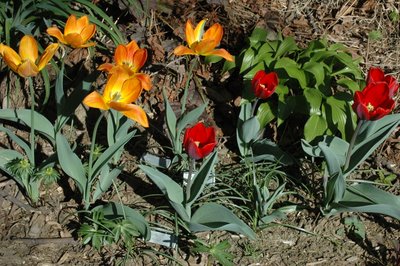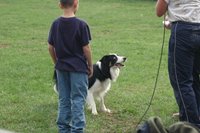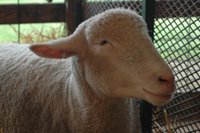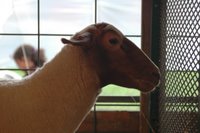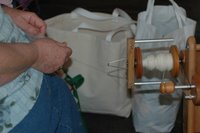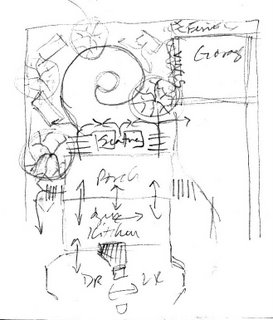Posted on September 11, 2010, the 9th Anniversary of the attacks.
October 15, 2001
An open letter to Joanna Tipple, pastor of the Craryville and Copake Churches in New York State.
Dear Joanna:
Sorry I missed you when you came to the city to deliver the bears. I’ve been wanting to write you. I’ve found it hard to write at all. There are no words.
I want to thank you and the congregations of the Craryville and Copake churches for welcoming me at your services that first Sunday after September 11. While it may have helped to be the preacher’s wife, I know there was more to it than that! It was comforting to feel held there, knowing that John and I had to return to our homes in New York City that afternoon. I didn’t know what we’d be returning to. I wept during both services. I’ve wept a lot since.
I work two blocks from where the towers were. I’ve seen it from the street, from the roof of my office building, from our lunch room twenty-seven floors up. I try to approach my presence in the city at this time as a naturalist, observing and recording changes in the physical environment and the behavior of its inhabitants. I want to remain present without withdrawing, so I can bear witness.
The fires still burn. Smoke still scents the surrounding streets and buildings. While rain has rinsed most of the gutters, ash still coats statues, windows and rooftops. In low and sheltered areas, the rain and ash mixed with shredded documents from the towers to create a gray papier mache. The “Missing Person” posters – and only those closest to them held any hope they would be “found” – and sidewalk memorials of candles and the poetry of anguish, rage, and hope, are slowly eroding.
I’ve been thinking a lot about something you said during one of your sermons that Sunday. I think it was at the Copake service, while speaking to the shock and terrible loss of the preceding week, you said something like “I don’t know how someone could get through this without God.” I heard this as a question. I want to respond. I want to give something back to you and the congregations. For myself, once again I must make sense of senseless loss.
The Friday after John and I got back to the city was my first visit back to my office, and downtown. Power had been restored to our buildings and some of us went in to ready our offices and equipment for our colleagues’ return that Monday, two weeks after the attacks. My colleagues and I hugged when we saw each other. In a conversation that day with one of our vice presidents, she observed “Nothing is permanent, except God.” What struck me was that she seemed to be realizing this for the first time.
Nothing lasts. Not the smoke and ash, not the wreckage of the towers, not even our grief or the memorials we will erect. Everything that is, all we experience, survive, and celebrate, occurs without God. Nothing is always. This makes it all the more mysterious, not less, all the more wonderful, precious and beautiful.
Most of my twenty-three years in New York City I’ve been surrounded, touched, by death. Death from AIDS. Death from suicide. Death from overdose. The slow deaths of addiction, of abuse. I do not consider death a friend, but it is not my enemy. It is familiar to me. I have grieved, and grieved again, and more, and each new loss touches all the others through me. Through countless repeated uses over the years, my grief has become burnished, polished through use like a favorite tool. Comfortable to hold. Fitting my hand. Perfectly balanced for the task. I can pick it up when I need to. I can set it down when this work is done.
In the past I’ve described myself as a rabid atheist. John has known me a long time and can attest to the accuracy of this assessment. I’ve mellowed somewhat over the years, but nothing in my experience has yet to dissuade me from my fundamental disbelief. By the age of ten I realized that what was being taught to me as the Word of God was simply wrong. Not wrong as in incorrect, but immoral, unethical, unjust. The vision of heaven conveyed to me was no place I’d want to be. The God I was supposed to worship was nothing I could respect. Growing up gay in a world rife with homophobic cultures didn’t change my disbelief. If I were to believe so-called religious leaders, my love is an abomination, my kind deserving of extermination. There seems little point to believing in any of their hateful Gods.
Again, and still, horrors are committed in the name of God. A month ago, more than five thousand people lost their lives in a smoking crater, killed in the name of God. It makes no difference to me whether the banner reads “Holy War” or “God Bless America.” This crisis has brought out both the best and worst in people. Like any tool, the idea of God is used for evil as well as good. Then what good is God?
A problem with the word “atheist” is that it simply means “without god.” The word doesn’t summon anything new. It doesn’t suggest any alternatives. It doesn’t address your question. It’s as useless and inadequate as “non-white.” There are within me other beliefs, moral convictions, even something I am sometimes willing to call spirituality, which transcend God.
As I tend my garden, I recall how it was a minute, a day, a year ago. That flower was, or was not, blooming yesterday. This plant has grown over the years and now crowds its neighbors. A label in the ground shows where another plant has vanished. Should I replace it, or try something new? I weed. I plant. I water. I sit. The garden asks me to see it as it really is, not just how I remember it, or how I wish it to be. Gardening continues to teach me many lessons. Gardening is my prayer.
So I must be in the world. Remembering what was. Observing what is. Hoping for what can be. Acting to bring it into being. When we struggle to understand, we question what is. Science can ask, and eventually answer, “What?” and “How?” It cannot answer the one question that matters, the question for which Man created God: “Why?” Now, as with each new loss, I ask again: Why am I here? Why am I alive?
The only answer I’ve come across which satisfies me at all comes from Zen: The purpose of life is to relieve suffering. Not to relieve pain, or grief, or loss. These cannot be avoided. But to relieve suffering, which we ourselves bring into the world. Because death is senseless, the only sense to be found is that which we manifest in our own lives. The only meaning there can be in life is what we impart.
Or, as someone else might say, the kingdom of god is within each of us.
[bit.ly]
